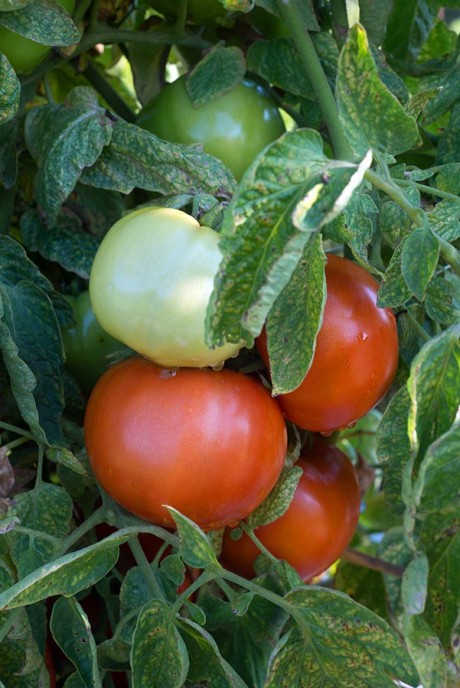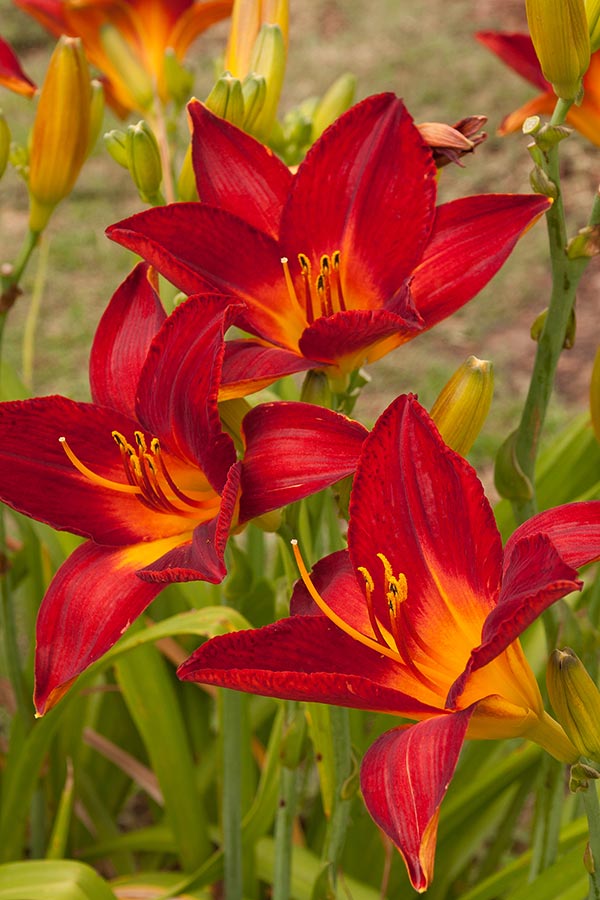Lost harvest
Plus Garden To-Do's for June and July
By L.A. JacksonJust because a well-tended summer vegetable garden is green and growing doesn’t mean it will produce a bounty of edibles. Why? If plant flowers don’t set fruit, there won’t be any fresh produce from your garden. Fortunately, most problems that prevent fruit set can be overcome — you just have to know what to look for, such as:
- Nitro Nuked. A sin many gardeners commit: too much nitrogen. This essential plant element is necessary — but in moderate amounts. Using a fertilizer that is high in nitrogen content will grow large, healthy plants with lush foliage — extra foliage often produced at the expense of crops. If you have the need to feed, apply weak solutions such as compost tea, fish emulsion or a teaspoon of 5-10-10 fertilizer in a gallon of water around your veggies about every three to four weeks.
- Shady Situation. Sun-loving summer vegetables simply will not do very well in areas that receive less than five hours of direct sunlight. In such locations, most vegetable plants become tall and spindly as they search for the sun. The stress of too much shade also causes veggie plants to cut back on flower production. And then it’s simple botany: few flowers, fewer vegetables.
- Pesticide Spree. Squash, pumpkins, watermelons and cucumbers — and to an extent, okra, eggplant and peppers — are vegetables that benefit from visits by pollinating insects such as bees and butterflies. Mess with these six-legged friends, and you will be messing with the production of your garden. If you must spray plants because of harmful insects, first try a contact insecticide such as horticultural oil or insecticidal soap, and apply it early in the morning or at dusk when pollinating activity by beneficial bugs is at its minimum to help prevent accidental poisonings.
- Weather Woes. Here is one area where quality crop production depends on the benevolence of Mother Nature. Extended periods of rain can hamper fruit set because such monsoons prevent pollinators from flying and also rinse pollen from flowers. On the other end of the weather spectrum, long stretches of 90 degree-plus heat with no rain in sight will not only decrease pollinating insect activity, but the pollen grains in vegetable flowers become less viable.
Garden to Do’s
June
- Extend the beauty of annual ornamentals deep into the summer by continuing to plant colorful warm season eye-catchers such as petunias, marigolds, zinnias, portulaca, celosia and sun coleus.
- Aquatic garden lovers, plant your tropical water lilies! And since these pond pretties are heavy feeders, don’t forget to add to the pots tablets of time-release fertilizer formulated for aquatic plants.
- The best time to weed in the garden is after a soaking rain because it will be easier to pull the unwanted plants out with their roots intact. Take care not to step too close to cultivated plants — wet soil is easily compacted.
- Replace water in the bird bath at least once a week, and give the bowl a monthly scrubbing with a brush to keep it clean.
July
- Free plants! Now is a great time to take semi-hard cuttings of such ornamentals as aucuba, azalea, buddleia, clematis, nandina, gardenia, holly, kerria, camellia, viburnum and weigela.
- Herbs should begin to mature this month, and the best time to harvest them for peak flavor or scent is early in the morning before the sun’s rays strengthen.
- Worried about indoor pollutants? Spider plant, aloe vera, philodendron and golden pothos are very efficient at clearing the air in offices and homes of unhealthy chemical compounds.
- It is not too late for warm-season lawn renovation. Bermudagrass, centipede, St. Augustine and zoysia can still be planted this month.
-
Share this story:




